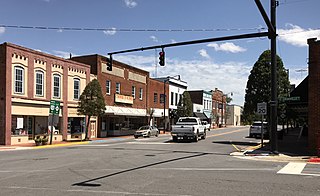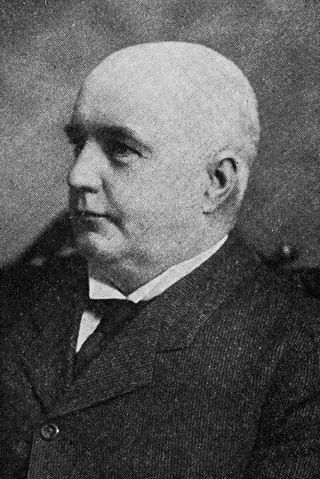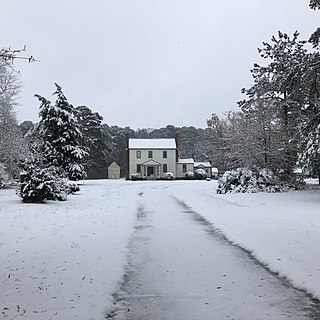
Roxobel is a town in northwestern Bertie County, North Carolina, United States. It dates to 1724 and was originally known as Cotten's Cross Roads. After several name changes, it has remained Roxobel since 1849. The population was 240 at the 2010 census.

Windsor is a town in Bertie County, North Carolina, United States. The population was 3,630 at the 2010 census, up from 2,283 in 2000. It is the county seat of Bertie County, which is also the homeland of the Southern Band Tuscarora Tribe that remained in North Carolina post Colonialism. Windsor is located in North Carolina's Inner Banks region.

Drayton Hall is an 18th-century plantation house located on the Ashley River about 15 miles (24 km) northwest of Charleston, South Carolina, and directly across the Ashley River from North Charleston, west of the Ashley in the Lowcountry. An example of Palladian architecture in North America and the only plantation house on the Ashley River to survive intact through both the Revolutionary and Civil wars, it is a National Historic Landmark.
Merry Hill is a rural unincorporated community located in Merry Hill Township in Bertie County in the U.S. state of North Carolina. This area is composed of mostly farm land. Within the town there is one school, Lawrence Academy (Private), which was founded in 1968 and is located on Avoca Farm Road. In the middle of the town is the post office, with the zip code 27957. Avoca Incorporated is a large company, located where the original Avoca Plantation existed, that profits from botanical extraction. Salmon Creek twists and turns through the wooded area of Merry Hill and opens up to the Albemarle Sound. This is known as the Mouth of Salmon Creek. There is currently a golf course called Scotch Hall Preserve in Merry Hill, built in 2009, that overlooks the Mouth of Salmon Creek and reaches out into the Albemarle Sound. The course was designed by retired professional golfer Arnold Palmer.

Boone Hall Plantation is a historic district located in Mount Pleasant, Charleston County, South Carolina, United States and listed on the National Register of Historic Places. The plantation is one of America's oldest plantations still in operation. It has continually produced agricultural crops for over 320 years and is open for public tours.
The Garrett White House, sometimes referred to as the Garrett-White House, is a historic structure in Colerain, Bertie County, North Carolina. The house is listed in the National Register of Historic Places as constructed in 1785, though some other sources give the date of construction as 1780.

Francis Donnell Winston was a North Carolina politician and judge who served as the tenth Lieutenant Governor of North Carolina from 1905 to 1909 under Governor Robert B. Glenn.

Hope Plantation, built in 1803, is an early house built in the Palladian mode of the federal style, located on the Carolina Coastal Plain, near Windsor, North Carolina, in the United States. The plantation house was built by David Stone, a member of the coastal Carolina planter class, later Governor of North Carolina and a United States senator. One of the finest examples of Palladian design built in timber, the manor house is slightly modified by neo-classical elements. The facade has five bays and a pedimented double portico with the original Chinese Chippendale balustrade. Crowning the house is a widow's walk with matching railing. The interior of the house displays a height and grandeur rare in the region, and is furnished with a unique collection of period furniture, art and artifacts.

Botany Bay Heritage Preserve & Wildlife Management Area is a state preserve on Edisto Island, South Carolina. Botany Bay Plantation was formed in the 1930s from the merger of the Colonial-era Sea Cloud Plantation and Bleak Hall Plantation. In 1977, it was bequeathed to the state as a wildlife preserve; it was opened to the public in 2008. The preserve includes a number of registered historic sites, including two listed in the National Register of Historic Places: a set of three surviving 1840s outbuildings from Bleak Hall Plantation, and the prehistoric Fig Island shell rings.
Elmwood is a historic plantation house located near Merry Hill, Bertie County, North Carolina. It was built in two phases about 1787 and 1810. It is a two-story, seven-bay, transitional Georgian / Federal style frame dwelling.
Elmwood, also known as the Watson-Mardre House, is a historic plantation house located near Windsor, Bertie County, North Carolina. It was built about 1836, and expanded between 1838 and 1863. It is a two-story frame structure three bays wide and two deep, with Greek Revival and Federal style design elements. It has a gable roof. Also on the property are the contributing kitchen and dairy.
The Hermitage is a historic plantation house located near Merry Hill, Bertie County, North Carolina. It consists of a 1+1⁄2-story, side hall plan Georgian style rear wing with a 2+1⁄2-story, five bay, Federal style addition. Also on the property are the contributing gable roof smokehouse and a two-room structure dating from the Greek Revival period.

Pineview, also known as Browne House, is an historic plantation house located near Roxobel, Bertie County, North Carolina. It was built about 1838, and is a two-story, three bay, frame Federal style dwelling with a hall-and-parlor plan. An exterior dining room, built about 1868, was attached to the house in 1950. Also on the property are the contributing smokehouse, office, kitchen, and dairy.
Liberty Hall, also known as Outlaw House, is a historic plantation house located near Windsor, Bertie County, North Carolina. It was built about 1855, and is a two-story, three bay, frame dwelling with Italianate style design elements. It sits on a high brick basement. Also on the property is a contributing outbuilding.

Rosefield is a historic plantation house located at Windsor, Bertie County, North Carolina. It was built in three sections, with the oldest built about 1786–1791. It is a two-story, five bay, "L"-plan frame dwelling with Georgian, Federal, and Greek Revival style design elements. It has a two-story, two-bay addition and a two-story rear addition built in 1855. It features a hip roof front porch. Also on the property are the contributing small frame outbuilding, office, dairy, and family cemetery.
King-Freeman-Speight House, also known as Francis Speight House, is a historic plantation house located at Republican, Bertie County, North Carolina. It was built in two sections, with the oldest built between 1808 and 1828. The older section forms the basis of the current rear wing. About 1828, a 2+1⁄2-story, Federal style, side-hall plan was added at a right angle to the original structure. The house was enlarged and remodeled in 1907. It has a two-story, two-bay addition and a two-story rear addition built in 1855. It features a hip roof front porch. Also on the property are the contributing two smokehouses, the kitchen, and an office. Noted landscape artist Francis Speight was born in the house in 1896.
Woodbourne is a historic plantation house located near Roxobel, Bertie County, North Carolina. The two-story, frame main block was built about 1810, with one-story frame wings added in 1819. The front facade features a temple form, two-story, three-bay central pedimented pavilion. It is sheathed in weatherboard and sits on a brick foundation. Also on the property is a contributing dairy.

King House, also known as King-Bazemore House, is a historic plantation house located near Windsor, Bertie County, North Carolina. It was built in 1763, and is a 1+1⁄2-story, frame dwelling with brick ends. It has a gambrel roof and features two interior T-stack end chimneys. It is one of two known gambrel roofed dwellings with brick ends in North Carolina.
Mount Vernon is a historic plantation house, farm complex, and national historic district located near Woodleaf, in Scotch Irish Township, Rowan County, North Carolina. The house was built about 1822, and is a two-story, three bay, Federal style frame dwelling. It is sheathed in weatherboard and has a full-width, one-story shed roofed porch. The house was designated a post office in 1822. Also on the property are the contributing log smokehouse, large barn, "lighthouse" or Delco house, corn crib, gear house, woodhouse, spring house, mill site, shop, and plantation office.
George Higby Throop was an American schoolteacher and novelist. Under the pseudonym Gregory Seaworthy he wrote three novels, Nag's Head: or, Two Months among "The Bankers." A Story of Sea-Shore Life and Manners; Bertie: or, Life in the Old Field. A Humorous Novel; and Lynde Weiss. The first of these was the first novel in the United States to deal with then-contemporary life in North Carolina.













